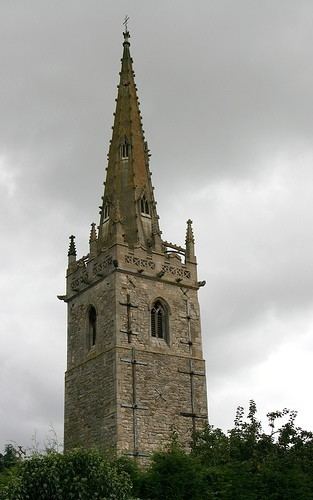Population 410 (2011) Sovereign state United Kingdom Local time Wednesday 4:58 PM | OS grid reference SK979606 Post town Lincoln | |
 | ||
Weather 11°C, Wind W at 19 km/h, 62% Humidity UK parliament constituency | ||
Coleby is a village and civil parish in the North Kesteven district of Lincolnshire, England. It is situated on the A607, and approximately 6 miles (10 km) south from the city and county town of Lincoln.
Contents
Map of Coleby, Lincoln, UK
Village
Coleby, a documented settlement in Domesday, is set on the Lincoln Cliff escarpment with views over the River Witham valley from its western side. The Viking Way, the 146 miles (235 km) long-distance footpath from the Humber Bridge to Oakham, passes through the village. Coleby's population is approximately 600, falling to 410 at the 2011 census.
Coleby has two village public houses, The Bell situated close to the church, and the Tempest Arms which stands at the top of the road that leads up the hill from the valley. The village has small school typically consisting of below 100 pupils.
Church of All Saints
Coleby Grade I listed Anglican parish church is dedicated to All Saints. The original church was built by the Anglo-Saxons, extended by the Normans and had a new spire built on top of the Saxon tower in the Middle Ages. There is a lack of symmetry to the chancel, the arches on the north and south walls do not match and half of an arch has been stopped off. The pews inside the church are not original, they come from a former church at Hackthorn, a village about 14 miles (23 km) to the north, as do two of the windows in the north aisle. The church was extensively restored in 1900. On the church steeple are landing lights for the nearby RAF Waddington airbase.
Coleby Hall
Coleby Hall is a Grade II* listed country house which stands near the church in a park of around 50 acres (0.2 km2). It is a gabled house constructed in coursed rubble and ashlar with a red-tiled ridge roof, built in 1628 for Sir William Lister of Rippingale, the father of Thomas Lister. The hall descended in 1734 to Frances Lister, who had married Thomas Scrope. Thomas altered and extended the hall and in 1762 built in the grounds a folly of a Temple to Romulus and Remus (now grade I listed) and a gateway to the Hall as an imitation ruined Roman arch based on Newport Arch in Lincoln. Major alterations to the hall and estate were made after 1856. Sir Charles Robert Tempest was created a baronet in 1841.
RAF Coleby Grange
During the Second World War, the Ministry of Defence constructed an airfield at RAF Coleby Grange to the east of the village on open heathland, immediately west of the A15 road. It opened in 1939 with grass runways as a relief landing ground for RAF Cranwell. In May 1941 it was transferred to 12 Group, RAF Fighter Command and became a satellite station for RAF Digby.
The station re-opened in 1959 as a Thor IRBM launching base, it closed again in 1963. Today the airfield is in private hands and used for agriculture with only the Control Tower, which still stands although in a ruined state, as a visible sign of the station's existence.
